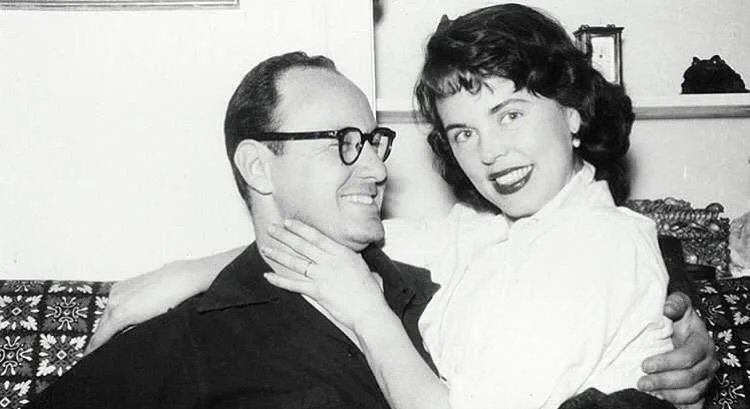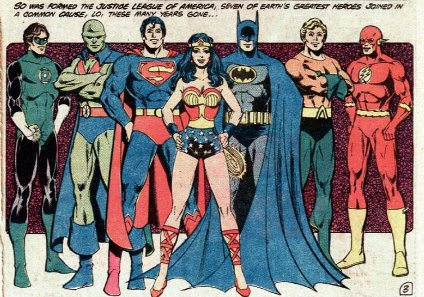Stan Lee: Man of Marvel
December 28, 1922 – November 12, 2018
Stan Lee (born Stanley Martin Lieber) was an American comic book writer, editor, publisher, and producer. He rose through the ranks of a family-run business called Timely Comics which would later become Marvel Comics. He was the primary creative leader for two decades, leading its expansion from a small division of a publishing house to a multimedia corporation that dominated the comics and film industries.
He co-created iconic characters, including Spider-Man, the X-Men, Iron Man, Thor, the Hulk, Ant-Man, the Wasp, the Fantastic Four, Black Panther, Daredevil, Doctor Strange, the Scarlet Witch, and Black Widow.
Following his retirement in the 1990s, Lee frequently made cameo appearances in films and television shows based on Marvel properties on which he received an executive producer credit, which allowed him to become the highest-grossing person in film of all time by a large margin. He continued independent creative ventures into his 90s until his death in 2018. Lee received the NEA's National Medal of Arts in 2008.
Wanna know more? Read on…
Stanley Martin Lieber was born on December 28, 1922, in New York City, in the apartment of his Romanian-born Jewish immigrant parents. Lee's father, trained as a dress cutter, worked only sporadically after the Great Depression. As a child, Lee and his brother shared the bedroom, while their parents slept on a foldout couch.
Lee said that as a child he was influenced by books and movies, particularly those with Errol Flynn playing heroic roles. Reading The Scarlet Pimpernel, he called the title character "the first character who could be called a superhero Lee and his brother shared the bedroom, while their parents slept on a foldout couch.
Errol Flynn
Lee enjoyed writing. He said that in his youth he worked part-time writing obituaries; delivering sandwiches; working as an office boy for a trouser manufacturer; ushering on Broadway; and selling subscriptions to the New York Herald Tribune newspaper. He graduated from high school early, aged sixteen and a half in 1939 and joined the WPA Federal Theatre Project.
He married Joan Clayton Boocock, originally from Newcastle, England, on December 5, 1947, and in 1949, the couple bought a house on Long Island. Their daughter Joan Celia "J. C." Lee was born in 1950. Another daughter, Jan Lee, died a few days after her birth in 1953.
Stan and Joan
Early career
With the help of his uncle, Lee became an assistant in 1939 at the new Timely Comics division belonging to publisher Martin Goodman. By the 1960s, would evolve into Marvel Comics.
His duties were very low-level at first. "I had to make sure the inkwells were filled", Lee recalled in 2009. "I went down and got them their lunch, I did proofreading, I erased the pencils from the finished pages for them".
Young Stanley Lieber made his comic-book debut writing placeholder text for Captain America Comics #3 (May 1941), using the pseudonym Stan Lee (a play on his first name, "Stanley"), which years later he would adopt as his legal name. Lee explained that because of the low social status of comic books, he was so embarrassed that he used a pen name so nobody would associate his real name with comics when he wrote the Great American Novel one day.
Timely Comics publisher Martin Goodman
In 1941, Goodman installed Lee, just under 19 years old, as interim editor. His knack for the business led him to remain as the comic-book division's editor-in-chief, as well as art director, until 1972, when he would succeed Goodman as publisher.
Lee entered the U.S. Army in 1942 and served in the Signal Corps, repairing communications equipment. He was transferred to the Training Film Division, where he wrote manuals, training films, slogans, and occasionally cartooning. Lee's division included many famous or soon-to-be-famous people, including Academy Award-winning director Frank Capra, New Yorker cartoonist Charles Addams, and author/illustrator Theodor Geisel, later known to the world as "Dr. Seuss."
Lee during World War 2
In the mid-1950s, by which time the company was now known as Atlas Comics, Lee wrote in a variety of genres including romance, Westerns, humor, science fiction, medieval adventure, horror, and suspense. By the end of the decade, Lee had become dissatisfied with his career and considered quitting the field entirely.
Marvel Comics
In 1956, DC Comics revived the superhero archetype and experienced significant success with the Flash, and later in 1960 with the Justice League super-team. In response, publisher Martin Goodman assigned Lee to come up with a new superhero team. Lee's wife suggested that he experiment with stories he preferred since he was planning on changing careers and had nothing to lose.
DC’s Justice League
Lee gave his superheroes a flawed humanity. Before this, most superheroes had been perfect people with no serious, lasting problems. Lee introduced complex, naturalistic characters who could have tempers and vanity; they bickered, worried about paying their bills and impressing girlfriends, and sometimes even got physically ill.
The first superheroes Lee and artist Jack Kirby created together were the Fantastic Four in 1961. The team's immediate popularity led Lee and Marvel to produce a cavalcade of new titles including the Hulk, Thor, Iron Man, the X-Men, Daredevil, Doctor Strange, and Marvel's most successful character, Spider-Man, all of whom lived in a thoroughly shared universe. Lee and Kirby gathered several of their newly created characters together into the team title The Avengers which would also revive characters from the 1940s such as Captain America.
The Fantastic Four
Lee's revolution extended beyond the characters and storylines to how comic books built a sense of community between fans and creators. He introduced the practice of regularly including a credit panel, naming not just the writer and penciler but also the inker and letterer. Regular news about Marvel staff and storylines was presented on the Bullpen Bulletins page, which was written in a friendly, chatty style. Lee remarked that his goal was for fans to think of the comics creators as friends and considered it a mark of his success that, at a time when letters to other publishers were addressed "Dear Editor", letters to Marvel addressed the creators by first name (e.g., "Dear Stan and Jack").
Throughout the 1960s, Lee scripted, art-directed and edited most of Marvel's series, moderated the letters pages, wrote a monthly column called "Stan's Soapbox", and wrote endless promotional copy, often signing off with his trademark motto, "Excelsior!"
In 1966, Lee and his team focused The Amazing Spider-Man stories on the social lives of the characters as well as their adventures. The stories became more topical, addressing issues such as the Vietnam War, racism, politics, and student activism. Robbie Robertson, introduced in The Amazing Spider-Man #51 (August 1967) was one of the first African American characters in comics to play a serious supporting role. In the Fantastic Four series, they produced many characters that have become central to Marvel, including the Black Panther, an African king who would be mainstream comics' first black superhero.
In 1971, the U. S. Department of Health, Education and Welfare asked Lee to write a comic-book story about the dangers of drugs and Lee conceived a three-issue subplot in The Amazing Spider-Man #96–98 (May–July 1971), in which Peter Parker's best friend becomes addicted to prescription drugs. The Comics Code Authority refused to grant its seal because the stories depicted drug use; the anti-drug context was considered irrelevant. The comics sold well, and Marvel won praise for its socially conscious efforts. The CCA subsequently loosened the Code to permit negative depictions of drugs, among other new freedoms.
In 1972, Lee stopped writing monthly comic books to assume the role of publisher.
Eventually, Lee became a figurehead and public face for Marvel Comics. He made appearances at comic book conventions around America, lecturing at colleges and participating in panel discussions.
He moved to California in 1981 to develop Marvel's TV and movie properties. He was an executive producer for and made cameo appearances in Marvel film adaptations and other movies.
Lee stepped away from regular duties at Marvel in the 1990s, though he continued to receive an annual salary of $1 million as chairman emeritus.
The 2000s saw Lee's public persona penetrate the public consciousness through merchandising, branding, and appearances in Marvel books as a character in the Marvel Universe. In 2006, Marvel commemorated Lee's 65 years with the company by publishing a series of one-shot comics starring Lee himself meeting and interacting with many of his co-creations, including Spider-Man. At the 2007 Comic-Con International, Marvel Legends introduced a Stan Lee action figure.
Stan Lee died on November 12, 2018 - but the world he created will live on to delight generations to come.












